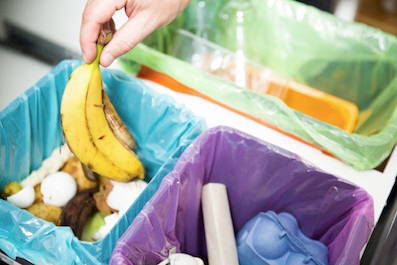 Cleanzine: your weekly cleaning and hygiene industry newsletter 10th July 2025 Issue no. 1170
Cleanzine: your weekly cleaning and hygiene industry newsletter 10th July 2025 Issue no. 1170
Your industry news - first
The original and best - for over 20 years!
We strongly recommend viewing Cleanzine full size in your web browser. Click our masthead above to visit our website version.
Waste: more ambitious targets towards a circular economy
 The European Parliament's environment committee voted on Tuesday to amend a European Commission proposal on waste management, (the 'waste package') which is a priority for the EU for this year. In previous resolutions the EP had called for more ambitious targets. This vote was the first step towards entering negotiations with the Commission and European Council.
The European Parliament's environment committee voted on Tuesday to amend a European Commission proposal on waste management, (the 'waste package') which is a priority for the EU for this year. In previous resolutions the EP had called for more ambitious targets. This vote was the first step towards entering negotiations with the Commission and European Council.
According to statistics from 2014, 44% of all municipal waste in the EU was recycled or composted. This compares to just 31% in 2004, and by 2020 member states should be recycling or composting over 50% of waste. This still leaves a lot to be either landfilled or incinerated however, and this week the environment committee voted on a legislative package with more ambitious EU targets for 2030.
The new proposals aim to manage rubbish in a more efficient and effective manner. It is the first step towards a circular economy, where most if not all products and materials are recycled or re-used again and again (through repairing, refurbishing and recycling).
Better management of waste would benefit the environment, public health and even the economy - as waste can be a source of income. For instance, if 95% of mobile phones were collected for re-use, savings on material costs of more than €1 billion per year could be generated.
The package includes four separate directives on waste, landfills, packaging and vehicle, battery and electronic equipment recycling.
* Municipal waste: Mainly generated by households, municipal waste represents around 10% of the total waste generated in Europe. Between 2004 and 2014, the total municipal waste generated in the EU declined by 3% in absolute terms. However, there has been no uniform trend across countries. Whereas Denmark substantially increased the quantity of municipal waste per capita, other member states like Spain, decreased it considerably.
* Landfills: Currently in the EU the landfilling of untreated waste is banned and as of 2016 the share of biodegradable municipal waste ending up in landfills was limited to less than 35% of 1995 levels. However, most EU countries are behind the current targets and 16 member states have obtained derogations.
In 2014 countries including Austria, Belgium, Denmark, Germany, the Netherlands and Sweden sent virtually no municipal waste to landfill, while others such as Cyprus, Croatia, Greece, Latvia and Malta still landfilled more than three quarters of their municipal waste. The Commission is proposing to limit landfill waste to 10% of overall waste by 2030.
* Packaging: Materials used for packaging in the EU include paper, cardboard, glass, plastic, wood and metal. Plastic and wooden packaging hold the lowest share of recycling, although there are wide variations in recycling rates across the member states.
The proposed legislation also includes proper recycling of end-of-life vehicles, batteries (only 40% of which were recycled in 2013) and e-waste.
AP Images/European Union-EP
26th January 2017







